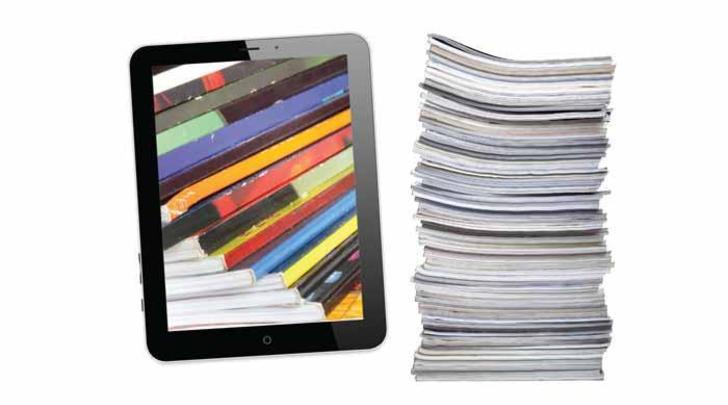What's greener?
What’s greener? Digital vs print
Green Ideas editorial team

Digital
Production and use of an iPad3 emits 180kg of CO2.
An idling iPad uses around 60 kilowatt-hours a year, which equates to about 36kg of CO2, or the equivalent of driving a car more than 200km.
By the time you switch it on, transport of an iPad has given off 10.8kg of CO2.
Reading online content on a PC consumes around 70 watts of electricity per 24 hours – thereby releasing about 1kg of CO2, equivalent to driving 6km. Using a laptop consumes much less power – 19 watts in 24 hours, or 250g of CO2.
Sixty-seven per cent of an iPad’s CO2 emissions happen during production; 25 per cent come from the electricity used by the device.
Leaving a charger plugged in and switched on (without the device attached) for a year is equivalent to the emissions from a 3km drive.
Computers and e-readers typically contain toxic materials such as beryllium, cadmium, lead, mercury, hexavalent chromium, and brominated flame retardants. These can be released into the environment during recycling or disposal.
A typical magazine causes the emission of around 0.6kg of CO2.
You need to buy 300 magazines before print emits more CO2 than digital, based on the lifetime emissions of an iPad3.
More than 80 per cent of paper is bleached at Elemental Chlorine Free (ECF) paper mills but a typical mill still releases about 8 tonnes of chlorine-containing pollutants, including dioxins, a day.
Totally Chlorine Free (TCF) paper bleaching is a minority market, but releases zero chlorine-containing pollutants.
If magazines are disposed of in landfill, they can emit methane as they decay. Methane has 25 times the global warming impact of carbon dioxide.
Zero per cent of print’s emissions occur during reading, and only 1 per cent in disposal. But reading digitally constantly consumes electricity and generates emissions.
You choose
- If you buy hundreds of magazines and newspapers a year, reading digitally may be the greener choice.
- For occasional magazine buyers, printed products still have less environmental impact.
Research: Andrew Mackintosh
Have an eco dilemma that needs expert advice? Email [email protected] with ‘My dilemma’ in the subject line, or write to Green Ideas, PO Box 47177, Ponsonby, Auckland 1144.
